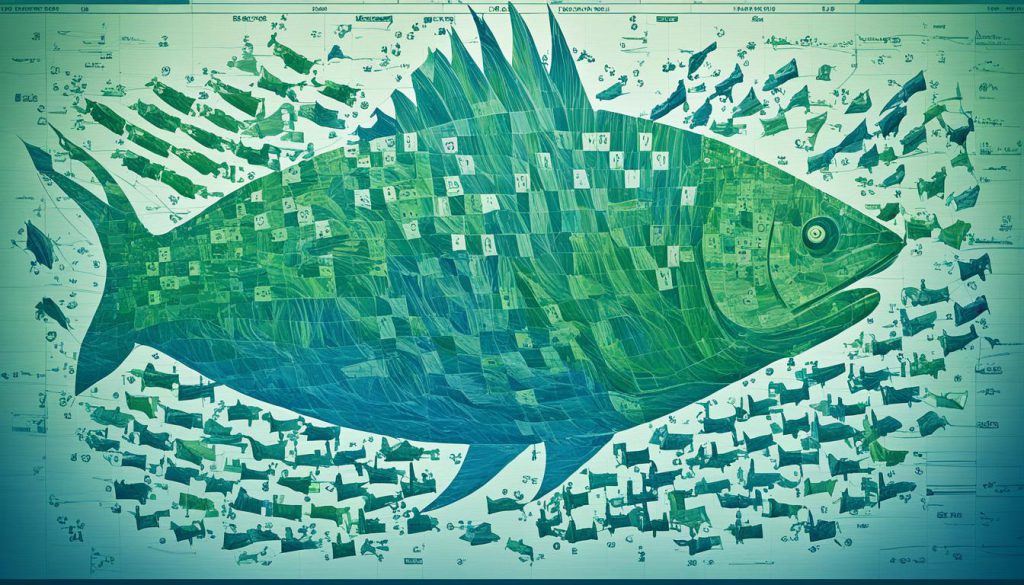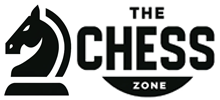How can artificial intelligence reshape the way we play the royal game of chess?
The blend of AI and chess reveals the complex world of chess engines. Sites like chess.com offer a “Single Player Mode” with bots. They range from real-life chess stars to fictional characters, each with their own tactics. These digital foes test players of all skills, from top players to beginners.
In this study, we look at engines like Stockfish and Komodo. Stockfish has won 13 World Chess Engine Championships and 19 chess.com titles. It uses deep learning and the minimax algorithm to excel. Komodo, however, uses its special Komodo Mlipir Algorithm for fewer mistakes. These engines show how far chess strategy and analysis have come.
Key Takeaways
- Chess engines like Stockfish follow intricate algorithms, while Komodo focuses on cautious play.
- Sites like chess.com provide bots for a variety of playing styles and strategies.
- Stockfish is known for its many wins and deep analytical skills.
- Komodo minimizes errors with its Komodo Mlipir Algorithm (KMA).
- Neural networks in chess engines have greatly improved game strategy analysis.
Introduction to Chess Engines
Chess engines have changed how we play and learn chess today. They give players advanced tools for better strategy. These programs make the game more like human play, changing chess for all skill levels.
What are Chess Engines?
Chess engines are software that plays chess at a very high level. They use algorithms to suggest moves, giving players insights like a pro. Top engines like Stockfish and Komodo offer deep analysis and powerful calculations.
The Evolution of Chess Engines
The first big step was in 1983 with an engine named Belle. It brought new ideas like quiescence search. Then came Deep Blue, beating Garry Kasparov in 1997 by scanning millions of positions per second. Now, engines like Stockfish score 3800, while neural networks like Leela Chess Zero show AI progress.
The Impact of Chess Engines on Modern Chess
Chess engines have greatly affected today’s chess scene. Sites like chess.com use them for playing against varied AI opponents. They cater to all, enhancing tactics and game analysis for players. Engines have reshaped training, game analysis, and the competitive nature of chess.
Top Chess Engines in 2023
In 2023, the world of chess engines is vibrant with advanced algorithms and new designs. This year is crucial for both fans and pros. Three top chess engines stand out due to their excellent performance and technology.
Stockfish
Stockfish tops the list as one of the mightiest chess engines. It shines with a CCRL rating of 3533 and a CEGT rating of 3682. This giant supports up to 512 CPU threads for fast, deep analysis. It also handles up to 32 terabytes in its transposition table. For more, visit the latest top chess engines.
Stockfish proves its strength in many championships. Its open-source status means constant updates by its dedicated coder community. This makes it a tough challenge for any player.
Leela Chess Zero
Leela Chess Zero, also known as LCZero, is a powerhouse. It has a CCRL rating of 3463 and a CEGT rating of 3467. By combining Monte Carlo Tree Search (MCTS) with a trained neural network, it brings a human touch to chess. This novel method has transformed chess analysis and strategy.
LCZero’s approach is perfect for those wanting to explore modern chess with AI’s help.
Komodo
Komodo is favored for its careful, strategic play. It strives to minimize mistakes while deepening strategic play. This makes it a solid choice for players seeking stability and steady competition. Komodo is a key player among the strongest chess engines.
| Chess Engine | CCRL Rating | CEGT Rating |
|---|---|---|
| Stockfish | 3533 | 3682 |
| Leela Chess Zero | 3463 | 3467 |
| Houdini | 3383 | N/A |
| Berserk | 3793 | 3532 |
These leading chess engines each have special strengths and features. Using them can deeply improve your chess skills and understanding.
Stockfish: The Powerhouse
Stockfish is a top chess engine known for its power. It started as a version of the Glaurung engine. Thanks to Google, its growth as an open-source project has skyrocketed. Now, it’s a leading figure in chess, praised for its deep game analysis and regular updates.

History and Development
Stockfish’s development is a story of teamwork and breakthroughs. From its beginnings with Glaurung, it now uses advanced algorithms and learns from deep neural networks. The triumph of IBM’s Deep Blue over Garry Kasparov in 1997 showcased AI’s chess potential. Inspired by this, Stockfish combines minimax algorithms and neural networks, achieving new strategic depths.
Key Features
Stockfish is known for fast analysis and deep thinking in chess. It uses machine learning to look over many moves and find the best ones. When it fought AlphaZero, it showed its strength by winning 28 out of 100 games. Its learning ability and being open-source keep it ahead in chess technology.
Strengths and Limitations
Stockfish beats even the best human Grandmasters in chess. It shines in competitions like the Top Chess Engine Championship (TSEC), where it often wins. In the 2020 TSEC, it defeated Lila, confirming its top status. AI engines like Stockfish have made chess more popular and easier to get into.
Yet, being open-source means Stockfish can have unexpected issues. Quick updates may bring bugs that need fixing. But, the community and developers work together to make it better. The rise in people playing chess, partly due to the pandemic, has increased downloads of engines like Stockfish, showing its key role in today’s chess world.
The Komodo Chess Engine
When looking for the best chess engines, Komodo stands out. It was created by Don Dailey in 2010 and later improved by Mark Lefler in 2013. Komodo has grown into a major force in chess engine software.
Overview of Komodo
Komodo started in 2010 and quickly became known in the chess engine world. It uses a strategy that is careful, like the komodo dragon. In 2018, Chess.com bought Komodo and introduced the “Monte Carlo” version. This version confirmed Komodo as a top chess engine with a new way to choose moves.
Unique Features of Komodo
Komodo can change its playing strength, strategies, and opening books. The 2020 “Dragon” engine update added NNUE technology, boosting Komodo’s performance. Unlike others, Komodo chooses moves based on winning chances, making it thrilling.
Performance and Use Cases
Komodo has won big tournaments like CCT15, TCEC, and various world championships. It even beat Stockfish in several TCEC superfinals. By October 2020, Komodo was the third-best engine in the world, rated at 3419 by CCRL.
Komodo is a top choice for players at all levels. It offers regular games and lets players try different chess personalities. Komodo adapts to various styles, making it a must-have in chess engine software.
| Feature | Details |
|---|---|
| Development | Initiated by Don Dailey (2010), enhanced by Mark Lefler (2013) |
| Acquisition | Acquired by Chess.com in 2018 |
| Unique Algorithm | Win probability method |
| Playing Strengths | Varying strengths and styles |
| Technological Advancements | Release of “Dragon” engine with NNUE technology (2020) |
| Championships Won | Multiple including TCEC, World Computer Chess Championships, Blitz Championships |
Leela Chess Zero: The Neural Network Revolution
Leela Chess Zero has started a new chapter in the chess engine world thanks to its advanced neural network tech. It doesn’t just calculate moves and follow strict rules like traditional engines. Instead, Leela learns by studying lots of chess games from the past. This lets it play like a human, setting it apart from other leading chess engines.

How It Works
At the heart of Leela Chess Zero is a complex neural network. It gets better by analyzing countless positions from games. LcFiSh, which comes from Leela, uses NNUE (Efficiently Updatable Neural Networks) to judge game positions very accurately. This is a big step forward in how AI learns chess without human input.
Comparative Performance
Leela Chess Zero shines when compared to others because of how it learns. It’s played over 1800 games against many rivals, proving it can adjust and perform well, no matter the game speed.
In a famous match against StockFish, Leela showed its strength with a +5 win margin (52.5 to 47.5). Its use of NNUE search in LcFiSh makes it even more efficient. Regular updates to Leela, like the fast switch from v0.25 to v0.25.1, highlight its dedication to staying top-notch.
Real-World Applications
Leela Chess Zero is super useful in the real world too. It offers deep game analysis and helps players grasp complex positions. Its unpredictable, human-like play makes it a great partner for training or just for fun.
LcFiSh also shines in top contests like the Top Chess Engine Championship (TCEC), underlining its edge in today’s chess engine scene. Thanks to NNUE tech, both Windows and Linux users get to enjoy top-level performance.
Comparing Free vs. Paid Chess Engines
Deciding between free and paid chess engines is tricky. Many options exist, each with its own benefits and drawbacks. It’s important for all players, casual or serious, to choose wisely to improve their game.
Advantages of Free Chess Engines
Stockfish and Leela Chess Zero are loved by many. They offer strong computational power for free. For example, Stockfish can analyze games quickly, even faster with better computers.
These engines improve with help from their users. This collective effort leads to new features and better performance. For instance, using them on cloud servers like Chessify greatly increases their speed, making advanced analysis available to all.
Benefits of Investing in Paid Options
Paid chess engines provide unique features. They give a more polished experience, with updates, support, and better performance. Chessify‘s servers, for instance, offer immense speed, crucial for top-level players and analysts.
They also bring unmatched analytical depth thanks to their support and proprietary tech. Such tools are great for those needing deep analysis, game reviews, and tracking. Paid engines also have special databases and training tools, keeping you competitive.
Which Should You Choose?
Your choice should match your chess goals and means. If you value a community effort and affordability, go for free engines like Stockfish and Leela Chess Zero. But if you want exclusive features and consistent support, paid software might be best.
Mixing both free and paid engines could work well. Using free versions for daily practice and paid ones for detailed analysis balances both. In the end, whether you go free or paid, make sure it fits your chess ambitions.
Chess Engines in Professional Play
Chess engines have changed pro chess a lot. Grandmasters use engines like Stockfish and Komodo to review games and plan. They blend human smarts with AI’s precision, making chess different now.
Top chess engines have an Elo rating above 3000, way higher than any human. When AlphaZero beat Stockfish in 100 games, it set a new standard. Still, Stockfish is the strongest engine for the public, liked by many. Leela Chess Zero, the second best, also boosts competition.
Komodo Chess can adjust to many skill levels and styles. This makes it perfect for all kinds of players. IBM’s Deep Blue was famous for beating Garry Kasparov, a big moment in chess.
Rybka faced plagiarism issues but came out clean. Houdini Chess is among the top commercial engines. HIARCS, even as the oldest with over 3000 Elo, is still important in chess today.
Below is a table comparing strong chess engines used professionally:
| Chess Engine | Notable Achievements | Elo Rating |
|---|---|---|
| Stockfish | Multiple World Chess Engine Championship titles | Over 3000 |
| Leela Chess Zero | Second strongest publicly available engine | Over 3000 |
| Komodo | Popular UCI engine with diverse strengths | Approximately 3300 |
| AlphaZero | Defeated Stockfish in a 100-game match | Estimated 3500+ |
| Deep Blue | Defeated world champion Garry Kasparov | Approximately 2800 |
| Houdini | Rated as one of the highest commercial engines | Over 3200 |
| HIARCS | Oldest engine with more than 3000 Elo | Over 3000 |
| Rybka | Cleared of plagiarism claims by FIDE Ethics Commission | Approximately 3100 |
Learn more about these amazing chess engines. Check our full guide at chess engines in professional play.
The Future of Chess Engines
As we move deeper into the 21st century, chess engines like Stockfish and AlphaZero show us exciting paths forward. They have changed how we play chess, offering new strategies.
Predicted Trends
Looking ahead, we see several important trends. The mix of AI and machine learning stands out. These technologies provide deeper analysis and play styles close to human ones.
Neural networks, like those in Leela Chess Zero, will make these tools more sophisticated. They’ll challenge our usual strategies.
Impact on Human Players
The advancements in chess engines have big effects on players. They are great for learning strategies by analyzing games deeply. For instance, the future of chess engines includes AI analysis, which offers personalized tips for improvement.
But, the rise of these engines might change how we compete. Humans will need to keep up with machines’ sharpness.
Technological Advancements
The evolution of chess engines relies on new tech. AI has already changed how we see chess openings, bringing fresh moves. Platforms like Chess.com and lichess.org make chess available worldwide with AI’s help.
Soon, the line between playing against humans or AI may blur. This will make chess more complex and fun. As technology changes the game, keeping things fair and open will be key.
| Chess Engine | Technological Advancements | Impact on Strategy |
|---|---|---|
| Stockfish | Minimax Algorithm, Deep Learning | Profound Strategic Analysis |
| AlphaZero | Machine Learning, Neural Networks | Novel Strategies, Intuitive Play |
| Leela Chess Zero | Self-improving Algorithms | Human-like Intuition |
Conclusion
Looking back at the journey through chess engine software, we see big changes. Chess giants like Stockfish, Komodo, and Leela Chess Zero have changed how we play. They help everyone, from beginners to pro players, get better by offering deep insights.
Thanks to powerful computers, we can now solve tough chess puzzles. Even with two extra pawns, outcomes like draws or wins can be found with high accuracy. The top human players reach an Elo rating of 2800. But, engines like Stockfish have gone beyond 3500.
But, this progress has brought some problems. Cheating with computer help has become an issue in tournaments. This has led to big debates involving famous players like Topalov and Kramnik. Finding cheaters is a tough job, but we’re working on it. The chess world is strong and focused on fair play despite these challenges.
The mix of human creativity and computer accuracy promises a bright future for chess. By combining our natural skills with the technical power of chess engines, we explore new parts of the game. As we use these engines, we start a thrilling journey. It makes us smarter players and opens up new ways to think about chess in our tech-driven world.
Source Links
- https://medium.com/@mitrajeetgolsangi/a-different-outlook-toward-chess-and-artificial-intelligence-66ddae87812c
- https://arxiv.org/pdf/2109.11602
- https://www.chess.com/blog/TheChessKnight2000/introduction-to-the-chess-engine
- https://chessify.me/blog/what-is-chess-engine
- https://www.chess.com/article/view/computer-chess-engines
- https://chessify.me/blog/top-chess-engines
- https://medium.com/illumination-curated/ai-and-its-impact-on-chess-78e4ceb95c21
- https://www.toolify.ai/ai-news/unleashing-the-power-stockfishs-triumph-in-the-battle-of-chess-engines-1221173
- https://en.wikipedia.org/wiki/TCEC_Season_19
- https://www.chess.com/terms/komodo-chess-engine
- https://lczero.org/blog/2021/04/jumping-on-the-nnue-bandwagon/
- https://lczero.org/blog/
- https://chessify.me/blog/why-the-cloud-servers-for-chess-engines-worth-it-what-options-you-have
- https://www.chess.com/forum/view/general/chess-engines
- https://www.chess.com/terms/chess-engine
- https://www.chess.com/forum/view/general/the-future-of-chess-17
- https://www.chess.com/article/view/computers-in-chess-the-conclusion
- https://lukesalamone.github.io/posts/chess-engine-history/

